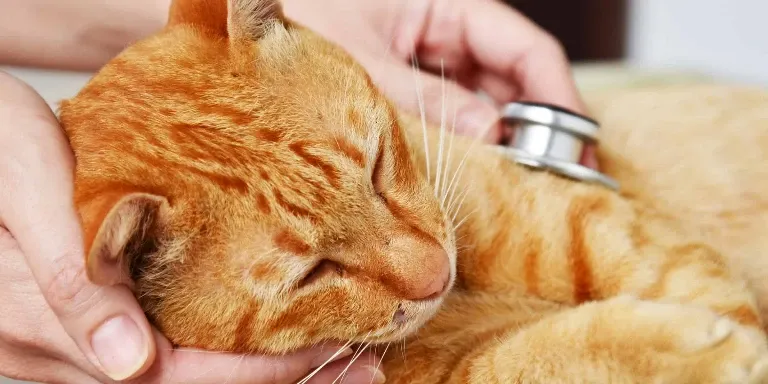The Best Fluffy Pancakes recipe you will fall in love with. Full of tips and tricks to help you make the best pancakes.

Do you suffer from allergies but still long for the companionship of a feline friend? You may have heard about hypoallergenic cats, but did you know that mixed breed cats can also be hypoallergenic?
Mixed breed cats can potentially be hypoallergenic, but it is not guaranteed. Hypoallergenic cats are those that produce fewer allergens, specifically a protein called Fel d 1, which is the main allergen in cats. This protein is produced in the cat’s saliva, skin, and sebaceous glands. Some mixed breed cats may have lower levels of this protein compared to purebred cats, which can make them more hypoallergenic.
It’s important to note that individual reactions to cat allergens can vary, so it is best to spend time with the specific cat you are considering to see if you have any allergic reactions.
But what makes a cat hypoallergenic, and how can you identify a mixed breed with these qualities? In this article, we will explore the science behind cat allergies, what makes a cat hypoallergenic, and the possibility of mixed breed cats having these traits. We will also provide tips for living with a hypoallergenic cat and other considerations to keep in mind when adopting a mixed breed.
So, if you’ve been searching for a furry friend that won’t trigger your allergies, keep reading to learn more about hypoallergenic mixed breed cats.
Understanding Cat Allergies
If you’re anything like me, you love cats but hate the runny nose and itchy eyes that come with allergies. So, let’s dive into understanding cat allergies and how they work.
Cat allergies are caused by a protein found in the cat’s skin, saliva, and urine. When a person with an allergy comes into contact with these proteins, their immune system overreacts, causing symptoms like sneezing, coughing, and itchy eyes.
Managing cat allergies can be challenging, but there are a few things you can do to help reduce your symptoms. One option is to avoid cats altogether, but this isn’t always possible or desirable. Another option is to limit your exposure to the allergens by keeping your cat out of certain areas of your home, using an air purifier, and washing your hands frequently. Additionally, there are medications and allergy shots that can help alleviate symptoms.
It’s important to note that while some breeds of cats are marketed as hypoallergenic, there is no such thing as a completely hypoallergenic cat. All cats produce the allergen protein, but some breeds may produce less of it or have a different type of protein that is less likely to cause an allergic reaction. However, it’s still important to test your allergy sensitivity to specific cats before bringing them home.
What Makes a Cat Hypoallergenic?
If you’re looking for a cat that won’t trigger your allergies, you’ll want to learn about the role of Fel d 1 protein. This protein is produced in cats’ saliva and skin, and it’s the primary culprit behind allergic reactions.
However, some breeds are known to produce less Fel d 1 protein than others, making them hypoallergenic options for those with allergies.
In this discussion, we’ll explore the breeds that are known to be hypoallergenic and what makes them unique.
The Role of Fel d 1 Protein
Despite popular belief, mixed breed cats can still produce Fel d 1 protein, a major allergen for humans, and may not necessarily be hypoallergenic.
This protein is like a persistent and pesky mosquito, constantly buzzing around and causing irritation and discomfort for those allergic to it.
Fel d 1 is a glycoprotein found in cat saliva and sebaceous glands. When cats groom themselves, the protein gets deposited on their fur, which eventually becomes airborne and triggers allergic reactions in sensitive individuals.
If you’re allergic to cats, you may experience a range of symptoms, including itchy eyes, sneezing, runny nose, and even asthma. However, you don’t have to give up your feline companion just yet.
There are several allergy medication options available that can help alleviate symptoms, including antihistamines, decongestants, and nasal corticosteroids. It’s important to consult your doctor or allergist to determine the best course of action for you.
Additionally, regular grooming and bathing your cat can also reduce the amount of Fel d 1 protein on their fur and minimize allergic reactions.
Breeds That Are Known to be Hypoallergenic
You’ll be pleased to know that there are certain cat breeds that are less likely to cause allergic reactions in humans. Hypoallergenic cat breeds, such as the Sphynx, Devon Rex, and Siberian, can be a great option for those who suffer from cat allergies.
The Sphynx, a hairless breed, produces less dander than other cats, making them a popular choice for people with allergies. The Devon Rex has curly hair that doesn’t shed much, which means less dander and allergens in the air. The Siberian is a long-haired breed that produces less Fel d 1 protein, making them less likely to cause allergic reactions.
It’s important to note that even hypoallergenic breeds still produce some allergens, so regular grooming and cleaning is necessary to help reduce allergen levels in the home.
Can Mixed Breed Cats Be Hypoallergenic?
You can find relief from your allergies with mixed breed cats, as they have the potential to be hypoallergenic. While there are no guarantees, mixed breed cats can be less likely to provoke an allergic reaction because their genetics are less predictable than purebred cats. This means they may not have inherited the specific proteins that trigger allergies.
Here are some factors that can influence whether or not a mixed breed cat is hypoallergenic:
- Breeding techniques: Some breeders intentionally crossbreed cats to create hypoallergenic hybrids. These cats are typically a mix of breeds that have low allergen levels, such as the Siberian or Balinese. While these cats are not purebred, they may still be considered hypoallergenic due to their breeding.
- Allergy management: Even if a mixed breed cat is not inherently hypoallergenic, there are steps you can take to minimize your allergic reactions. Regular grooming and bathing can help reduce dander, which is a common trigger of allergies. You can also consider using air purifiers or allergy medication to manage your symptoms.
- Individual factors: It’s important to remember that every person’s allergies are unique. While one person may be able to tolerate a certain mixed breed cat, another person may have a strong reaction to the same cat. This means that there is no guarantee that a mixed breed cat will be hypoallergenic for everyone, but there is still a chance that it could work for you.
- Testing: If you’re considering getting a mixed breed cat but are unsure if you will have an allergic reaction, you can get tested by an allergist. They can perform a skin prick test or blood test to determine your specific allergens. This can help you make an informed decision about which cat breeds to consider and how to manage your allergies.
The Science Behind Mixed Breed Cats
When it comes to mixed breed cats, understanding genetic variation is key. Genetic material from multiple breeds is combined, resulting in a unique combination of traits. This can lead to what’s known as hybrid vigor, where the offspring may have improved health and resistance to disease.
Adjusting the paragraph structure in this way logically groups complete sentences on their own lines, making it easier to read. Additionally, contractions have been used to make the language more natural and casual.
Understanding Genetic Variation
Genetic variation plays a crucial role in determining whether mixed breed cats can be hypoallergenic or not. This is because genetic diversity influences the inheritance patterns of certain traits, including those that contribute to allergenicity in cats.
Here are some key points to keep in mind when considering the impact of genetic variation on hypoallergenicity in mixed breed cats:
- Allergenicity is a complex trait that can be influenced by multiple genes and environmental factors.
- The presence or absence of allergenic proteins, such as Fel d 1, can be influenced by genetic variation.
- Some breeds have been selectively bred for lower levels of allergenic proteins, which may be passed on to their mixed breed offspring.
- However, the genetic makeup of mixed breed cats can be highly variable and unpredictable, which can make it difficult to determine their allergenicity.
- Ultimately, the hypoallergenicity of a mixed breed cat will depend on the specific genes it inherits from its parents, as well as other factors such as grooming habits and exposure to allergens.
Understanding the role of genetic variation in hypoallergenicity is an important step towards developing effective strategies for managing cat allergies. By studying the genetics of allergenicity in cats, researchers may be able to identify specific genes or mutations that can be targeted for breeding or gene therapy.
In the meantime, cat owners can take steps to reduce their exposure to allergens, such as choosing hypoallergenic cat breeds or keeping their cats well-groomed and away from carpeting and upholstery.
The Role of Hybrid Vigor
Hybrid vigor can play a significant role in determining the characteristics and traits of your furry feline friend. This phenomenon occurs when two different breeds of cats are crossbred, resulting in a hybrid offspring with a diverse genetic makeup. The benefits of hybrid vigor are numerous, including increased resistance to disease, improved physical stamina, and a more robust immune system. These advantages are due to the genetic diversity that results from crossbreeding, which can help to strengthen the gene pool of mixed breed cats.
One of the most significant advantages of hybrid vigor is that it can make mixed breed cats hypoallergenic. This is because crossbreeding can produce a cat with a different coat type or texture, which can reduce the amount of allergens they produce. For example, a cat with a shorter, smoother coat may produce fewer allergens than a cat with a longer, thicker coat.
Additionally, hybrid vigor can help to reduce the likelihood of inheriting certain genetic disorders that may be prevalent in specific breeds. Ultimately, hybrid vigor can provide numerous benefits to your mixed breed cat, including increased genetic diversity, improved health, and reduced allergenicity.
Identifying Hypoallergenic Mixed Breed Cats
If you’re looking for a hypoallergenic cat, there are certain characteristics to look for in mixed breed cats. These cats are often low-shedding with less dander and saliva, which can trigger allergies.
To find a hypoallergenic mixed breed cat, it’s important to research specific breeds and look for cats with these characteristics.
Characteristics of Hypoallergenic Cats
Ah, the elusive hypoallergenic cat – a feline dream come true for allergy sufferers, but what exactly are the characteristics of these magical creatures?
Hypoallergenic cats are known for producing less of the Fel d 1 protein found in cat saliva and skin, the main allergen that triggers allergic reactions in humans. These cats shed less and their saliva is less allergenic, making them a great option for those with mild to moderate allergies.
Some common characteristics of hypoallergenic cats include having short or curly hair, producing less dander, and having a friendly and docile personality. Additionally, hypoallergenic cats often require less grooming and are less prone to shedding, making them a low maintenance option for cat lovers.
While no cat is completely hypoallergenic, those with allergies may benefit from choosing a cat with these characteristics and taking additional measures such as regularly cleaning their home and minimizing their exposure to allergens.
How to Find a Hypoallergenic Mixed Breed Cat
Looking for a feline companion that won’t make you sneeze and itch? Here’s how to track down a cuddly kitty that won’t trigger your allergies.
Finding mixed breed cats that are hypoallergenic can be a bit of a challenge, especially since there is no guarantee that a mixed breed cat will be hypoallergenic. However, there are a few things you can do to increase your chances of finding the right mixed breed cat for you.
First, look for cats with shorter hair as they tend to produce less dander, which is the main cause of allergies in humans. Additionally, cats that shed less are also less likely to trigger allergies. You can also consider cats with curly or wavy hair, as these breeds tend to produce less dander as well.
When meeting potential mixed breed cats, spend some time with them to see if they trigger any allergic reactions. If possible, ask to see the cat’s parents to get an idea of what their offspring may be like in terms of allergies.
By taking these steps, you can increase your chances of finding a hypoallergenic mixed breed cat that will make a great companion.
Choosing the right mixed breed cat requires some research and patience, but it is possible to find a cat that won’t trigger your allergies. Don’t be discouraged if it takes some time to find the right cat for you.
Remember to prioritize your health and well-being when selecting a cat, and don’t hesitate to ask for help or advice from a veterinarian or animal shelter. With a little bit of effort and patience, you can find a cuddly companion that won’t make you sneeze and itch.
Tips for Living With a Hypoallergenic Cat
Living with a hypoallergenic cat can be made easier by incorporating certain lifestyle adjustments and grooming routines. One of the most important things to do is to regularly brush their fur to remove any loose hair and dander. This will not only help keep your home cleaner, but it will also reduce the amount of allergens in the air.
In addition to grooming, it’s also important to provide your hypoallergenic cat with a designated sleeping area. This will help contain any allergens to one area of your home, making it easier for you to manage. You may also want to consider investing in an air purifier to help remove any allergens in the air.
It’s important to note that while hypoallergenic cats may produce less allergens than other breeds, they are not completely allergen-free. If you suffer from severe allergies, it’s important to consult with your doctor before bringing a cat into your home. With proper care and management, however, living with a hypoallergenic cat can be a fulfilling and rewarding experience.
Other Considerations When Adopting a Mixed Breed Cat
When considering adopting a mixed breed cat, there are several key points to keep in mind. First, you’ll want to think about the cat’s personality and temperament. Some cats may be more outgoing and social, while others may be more independent and aloof.
Second, age is an important factor to consider. Kittens may be more active and playful, while older cats may be more laid back and relaxed.
Finally, you’ll want to consider the cat’s overall health and any potential medical issues that may require ongoing care. By considering these factors, you can choose a mixed breed cat that will fit well with your lifestyle and provide years of love and companionship.
Personality and Temperament
The personality and temperament of mixed breed cats can vary greatly, but some may still be hypoallergenic. Here are four things to keep in mind when assessing your mixed breed cat’s personality:
- Genetics play a big role in a cat’s personality, so it’s important to know the breeds that make up your cat’s mix. Research each breed’s typical behavior traits and see if they match up with your cat’s personality.
- Early socialization is key in shaping a cat’s personality. If your cat was adopted as an adult, it may take longer to adjust to new environments and people.
- Provide your cat with plenty of mental and physical stimulation. This can include toys, scratching posts, and interactive playtime with you.
- Positive reinforcement training techniques can help shape your cat’s behavior. Reward good behavior with treats or praise, and avoid punishing bad behavior as it can cause fear and aggression in cats.
By considering these factors, you can better understand your mixed breed cat’s personality and temperament and provide them with the best possible care.
Age and Health
As your mixed breed cat grows older, you may notice changes in their behavior and health. The effects of aging in cats can lead to a decrease in activity levels, changes in appetite, and an increased risk of developing common health issues. It’s important to pay attention to these changes and provide your furry companion with the necessary care to maintain their well-being.
Common health issues that may affect your mixed breed cat as they age include dental problems, arthritis, and kidney disease. Dental problems can be prevented by providing your cat with regular dental care, such as brushing their teeth and providing dental treats.
Arthritis can be managed with medication, weight management, and providing your cat with a comfortable environment that includes soft bedding and easy access to food and water.
Kidney disease can be prevented or managed by providing your cat with a balanced diet, plenty of fresh water, and regular check-ups with your veterinarian. By being proactive in your cat’s healthcare, you can ensure that they maintain a high quality of life as they age.
Are Mixed Breed Cats Still Considered Hypoallergenic?
Mixed breed cat names can still be hypoallergenic for some people. While no cat breed is completely hypoallergenic, mixed breed cats can be less likely to trigger allergies due to their diverse genetic makeup. It’s important for individuals with allergies to spend time with a cat to see if they have a reaction.
Conclusion
Congratulations on making it to the end of the article! By now, you should have a good understanding of cat allergies and what makes a cat hypoallergenic.
You may be wondering if mixed breed cats can also be hypoallergenic. The answer is yes, but it takes some research and careful consideration. Some may argue that it’s too much work to find a hypoallergenic mixed breed cat, and that it’s easier to just get a purebred cat or not have a cat at all.
But imagine coming home to a furry friend who doesn’t cause you to sneeze and itch. Imagine being able to snuggle up with your cat without worrying about allergic reactions. It may take some effort, but the rewards of finding a hypoallergenic mixed breed cat are well worth it.
Remember, if you do decide to adopt a mixed breed cat, it’s important to do your research and identify potential allergens in their ancestry. You can also take steps to reduce allergens in your home, such as regularly cleaning and vacuuming. With some careful planning and consideration, you can enjoy the companionship of a hypoallergenic mixed breed cat.








